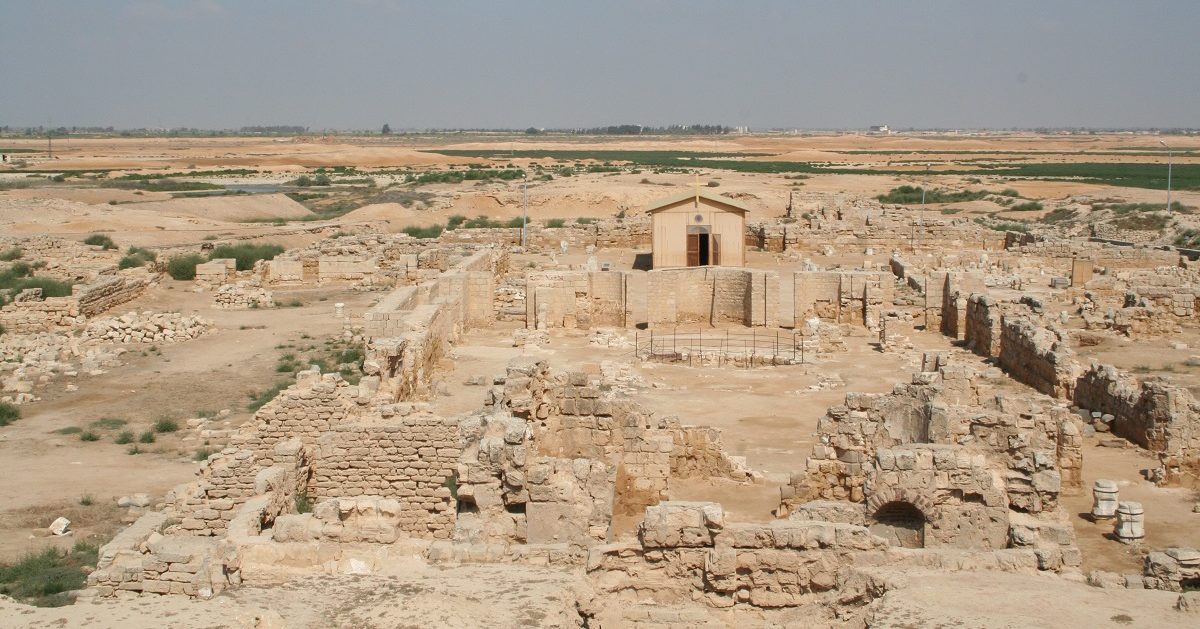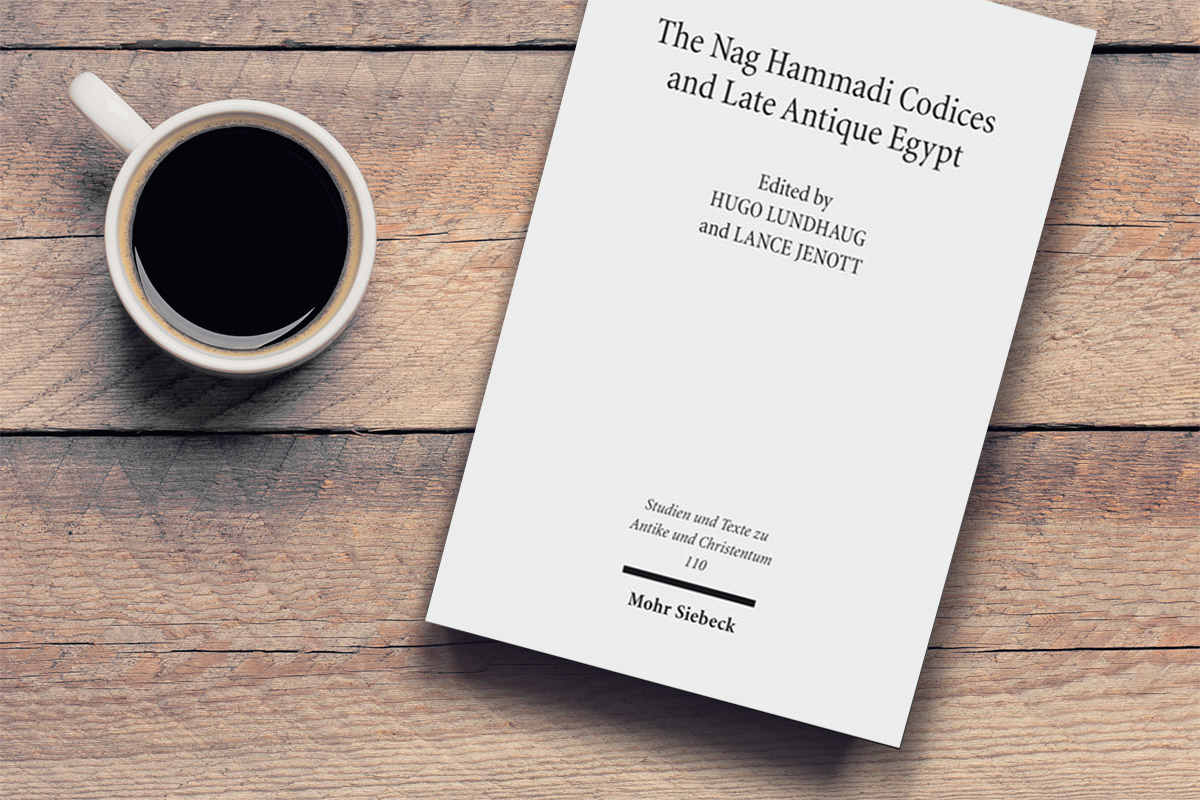Recently we featured The Nag Hammadi Codices and Late Antique Egypt from Mohr Siebeck, edited by Hugo Lundhaug and Lance Jenott. Dr. Lundhaug was kind enough to provide some more background on the fascinating research he’s carrying out on early Christianity and ancient texts at the University of Oslo. In particular, we focused on the value of reading the Nag Hammadi documents differently, namely, as evidence of later Egyptian Christianity instead of second century Gnosticism in the Roman empire.
Exegetical Tools
Your new edited volume on the Nag Hammadi codices came about from a conference organized by the ERC-project NEWCONT at the University of Oslo. Can you tell us a little about this project and what its purpose is, and how it might help us think better about ancient texts?
Hugo Lundhaug
The conference from which many of the articles derive was, as you say, part of the ERC-funded NEWCONT project at the University of Oslo. That project was all about looking at the Nag Hammadi Codices as products of early Egyptian monasticism. This was in answer to a growing frustration with scholarship on the Nag Hammadi texts that tended to ignore the material artifacts in which the texts have been preserved to us, and the context of the production and use of those artifacts.
Using a methodological perspective informed by New Philology, the NEWCONT-project focused on understanding the production and use of the Nag Hammadi Codices in light of their fourth-/fifth-century context, and on the copying and reading of their texts in light of these manuscripts. Rather than reading the Nag Hammadi texts as evidence of “Gnosticism,” we thus read these texts as products of early Egyptian Christianity and monasticism instead.
ET
The essays in this book focus on reading the Nag Hammadi texts as artifacts of 4th/5th century Egypt, rather than as artifacts of hypothetical Gnostic originals from the 2nd/3rd century. Are these goals exclusive or complementary? Is either reading more important or significant for church history?
Lundhaug
The difference here is one between looking at the texts that we actually have, the texts as they appear in the extant manuscripts, rather than the hypothetical earlier versions of those texts. Since the ‘original’ versions of these texts are lost to us, and their origins, often in languages other than Coptic (primarily or perhaps exclusively Greek), are unknown, we felt that basing our research on the extant evidence, and seeing that evidence primarily as evidence of its actual time of production, to be a more sound academic approach than to speculate concerning hypothetical origins.
The realization of the textual fluidity inherent in the transmission of much of this literature is an important basis for this stance. Still, the two approaches are complementary, rather than exclusive, although we feel that practitioners of the traditional approach would do well to take the nature of our evidence more fully into account.
ET
What are the main differences between reading these texts as Gnostic texts and Egyptian Christian texts? Are there any texts that receive a radically new interpretation (e.g., the Gospel of Thomas), or is the difference mainly in how we perceive and value the interpretation (perhaps, pejorative if they’re Gnostic, but neutral if they’re Egyptian Christian)?
Lundhaug
It can make a significant difference when we read the Nag Hammadi texts as products of Egyptian Christianity rather than as expressions of “Gnosticism.” It makes a difference what preconceptions we bring to the texts when we interpret them. When the interpretive contexts are changed, the interpretation changes. The approach highlighted by this volume, and by the NEWCONT-project in general, would tend to make the Nag Hammadi texts more important for the understanding of early monasticism and for Church History of the fourth and fifth centuries, and less important for the interpretation of second-century Christianity, the time-period for which these texts have most commonly been used as evidence.
ET
If readers of your work become more interested in Nag Hammadi texts, what would be some good sources to start with, both primary and secondary texts? How would you suggest getting a good grasp on the corpus and their significance?
Lundhaug
I would humbly suggest that they read our co-authored monograph, published by Mohr Siebeck in 2015, entitled The Monastic Origins of the Nag Hammadi Codices. This book provides the background and arguments for seeing the Nag Hammadi Codices as products of early Egyptian monasticism. I would also highly recommend Michael A. Williams’ brilliant critique of the category of ‘Gnosticism’, Rethinking ‘Gnosticism’: An Argument for Dismantling a Dubious Category (Princeton: Princeton University Press, 1996).
On the early monasticism in Egypt I would suggest James Goehring’s collection of essays on early Egyptian monasticism, Ascetics, Society, and the Desert: Studies in Early Egyptian Monasticism (Harrisburg, Penn.: Trinity Press, 1999). As for primary texts I would simply suggest reading any fourth- or fifth-century Christian author, to get a feeling for the discourses and debates of the period in which the Nag Hammadi Codices were produced and used. One collection of translations I would like to highlight, however, is Armand Veilleux’ translations of texts from the Pachomian monastic federation, published in three volumes as Pachomian Koinonia: The Lives, Rules, and Other Writings of Saint Pachomius and His Disciples (3 Vols.; Cistercian Studies 45–47; Kalamazoo, Mich.: Cistercian Publications, 1980–82).
ET
For those who like the ‘big picture,’ what are some of the main ideas that you think are most valuable to take away from this collection of essays?
Lundhaug
I think one especially valuable insight to take away from this volume is the important methodological realization that the contexts in which we read our ancient texts and study our ancient artifacts can make a huge difference. It is thus important to be clear about these choices. Our ancient sources do not interpret themselves.
ET
This volume was well-executed and stimulates good historical thought about ancient texts that many are accustomed to treating in a rather uniform way (= 2nd century, Gnostic, bad). Many thanks for your work here. What else can we expect to see from both of you in the next 2-10 years?
Lundhaug
Thanks! From me you can expect to see more studies of individual Nag Hammadi texts from the perspective of Egyptian Christianity and monasticism of the fourth and fifth centuries, as well as studies of later Coptic apocrypha and the manuscripts in which they have been preserved.
ET
Thanks Dr. Lundhaug for taking the time to chat with us about your new volume, co-edited with Lance Jenott, and about your ongoing work with the Nag Hammadi texts. We look forward to seeing more fruits of your labor.
For more about The Nag Hammadi Codices and Late Antique Egypt, read further here or buy the volume from Mohr Siebeck.



